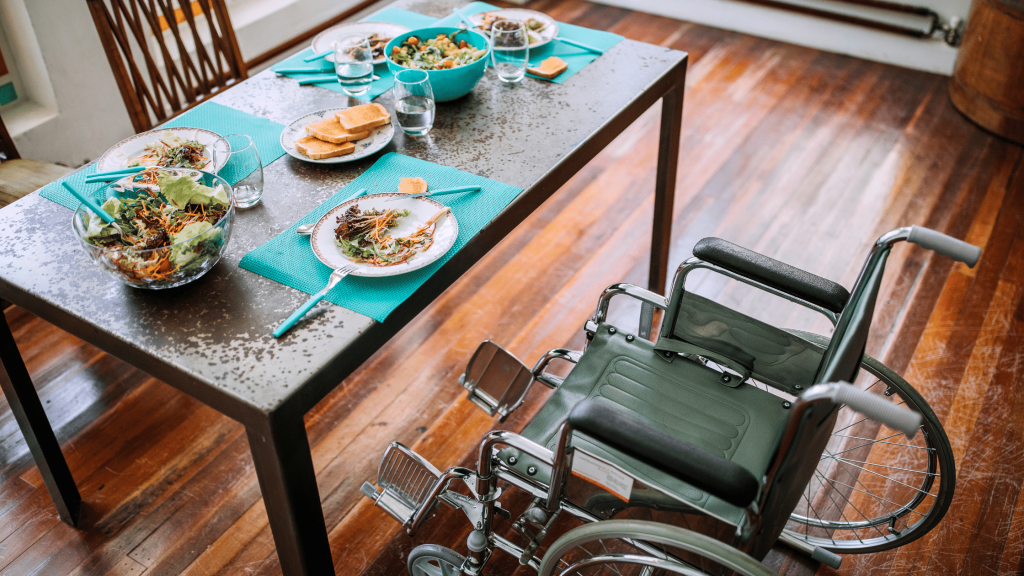As the name implies, a 55+ community is built for adults who are at least 55 years old. These complexes are often called retirement communities because many of the residents no longer have full-time jobs. There are a variety of price points for buying into these communities. Usually, they’re based on the amenities available to residents. Often, 55+ communities are designed to make retirement more relaxing, healthier, and lower-maintenance than a traditional single-family neighborhood.
How to Get Started
Moving to a 55+ community can be overwhelming after a lifetime living in larger homes. So, the first step to moving is going to be downsizing. In February 2021, The Shannon Jones Team talked to a number of experts about the process of downsizing. You can watch the experts speak in the video below and get their take on how to downsize.
Choosing the Right Location
Once you’ve begun the process of downsizing and know that you want to move, you need to consider several factors before making such an important decision. For starters, think about having to pay maintenance and utility costs on a fixed income. Generally, the larger your square footage or lot size, the more you’ll pay for electricity, gas, and water.
Do you want to purchase a retirement home in the area you live now, or in another area of the country? Just because you enjoyed visiting a community during one season doesn’t mean you’ll like living there year-round. Consider hurricane season in Florida and the sweltering summers of Arizona. If you’re moving to another state, it’s a good idea to travel to your prospective new hometown at different times of year to get a sense of the conditions you’ll be living in.
How Accessible is the Place?
While you might not want to think about it now, your mobility may degrade as you age. Developers generally build 55+ communities to be wheelchair accessible in case residents suffer an injury or illness. You probably won’t want to buy a place that has a staircase that you’ll get tired of climbing day after day.
Check the Community’s Resale Values
Although it may seem like this is your final home purchase, there’s a possibility that might not be the case. Health or family circumstances may require you to move into assisted-living housing or with your adult children. So it’s important to consider resale value. Also, there are times when 55+ community homes flood the market driving down property values. Make sure you’re okay with living in a home with a value that can be unpredictable.

What Will be Required of Me?
If you’ve lived in a community with a homeowner’s association before, the requirements of covenants, conditions, and restrictions are likely familiar. For those who haven’t, these typically include rules for parking, decorating your home, lawn maintenance, and more. Some 55+ communities may require both spouses to be at least 55 years old to purchase. Most associations do not permit children to live on the property. Sometimes buyers can ask the association for a reprieve from these standards. However, that research should be done before making an offer.
Get to Know Management
Living in a 55+ community where the management is proactive can eliminate a lot of stress and wasted time for you. Both are two things you probably don’t want to deal with in your retired life. Meet with the community’s management and talk with current residents to get a clear picture of how things are really working or not working. It can truly be a nightmare to get stuck with a horrible homeowners association or management company.
Know the 55+ Community Costs
The cost of buying in a 55+ community can vary depending on whether it has amenities including golf courses, fitness centers, pools, spas, and clubhouses that accommodate family gatherings, events, or classes. Ask yourself what sorts of activities will be interesting to you now and in the years to come.
Additionally, some 55+ communities have mandatory membership fees that add up over time. These fees pay for community management, home maintenance, landscaping, and other expenses. It’s more costly to live in communities that are exclusive and offer more services. Remember to pick a complex that is a good fit for your budget.
What to do With All That Free Time
Finding the right 55+ community is not just about what’s on the grounds but what’s in the surrounding area. While you’re driving around, keep an eye out for areas where you can see yourself spending time. How close is shopping or recreation? Are there any two-for-one happy hours at the bars and restaurants? How accessible are rail systems, major freeways, and airports?
Without a nine-to-five job, you’ll be able to pick from all sorts of interest clubs and volunteer opportunities. Especially in Southern California, people from all over the country move to 55+ communities. In light of this, it’s a good idea to get to know some of your prospective neighbors before purchasing a new home.
What is a stock-cooperative?
Some local 55+ communities, such as Leisure World of Seal Beach, were developed as stock cooperatives. Meaning, the building is owned by a corporation. Buyers acquire stock in this corporation with a value proportional to that of the apartment they’ll be living in. The transaction also includes transferring a license to occupy the dwelling space. Some specialized lenders offer financing for this type of property.
In case you’re interested in seeing some local examples of 55+ communities, here are a couple with active listings near Long Beach.
Leisure World
This massive 55+ community is almost like its own city with residential and recreational facilities spread over 542 acres. It even has its own nine-hole golf course, amphitheater, and post office. Condos and Co-Op Apartments are available for purchase and there are different association fees depending on which one you live in.
Homes for Sale in Leisure World
[License Error #28.2 - The Showcase IDX license for this website is not active or doesn’t exist.]Huntington Landmark
This premier 55+ community in beautiful Huntington Beach, also known as Surf City, hosts more than 1,200 homes including condominiums and townhomes. Residents at this community have access to a golf course, tennis courts, and other physical activities. If you want something to do that’s slower pace, there are several multi-purpose rooms used as an arts and crafts studio, ceramics studio, woodworking shop, and game room.




Leave a Reply